Artificial Intelligence (AI) is changing how we write in academia. Students and researchers are increasingly using AI tools to help with their work. These tools can check grammar, suggest better words, and help organize thoughts. Because of this, writing research proposals has become easier and faster.
Can research proposal AI create a whole research proposal with just one click? The short answer is no. While AI can help a lot, it still needs a person's ideas and decisions to make a complete proposal. You must guide the AI, choose what to use, and make it fit your needs.
In this article
Part 1. One-Click AI Tools for Research Proposal Generation
Research proposals are key for academics, scientists, and professionals to share their ideas and gain support. A well-prepared proposal outlines your research, helps overcome challenges, and enhances credibility. But crafting one can be demanding.
Fortunately, AI tools like Taskade, FlowGPT Research Proposal Generator, Poe Proposal-Writer-AI, Paperpal AI Academic Writing Assistant, and Textify help. These tools simplify creating research proposals with one click.
Using Taskade can simplify your research proposal process. Here’s how to use it step-by-step, with an example:
Step1
Start by creating an account on Taskade or log in if you already have one.
Step2
Once logged in, find the “Create New Project” button and click on it.
Step3
Taskade offers various templates. Select the one specifically for research proposals.
Step4
Fill in the template with your research details. You can edit the objectives, methodology, expected outcomes, and timeline.
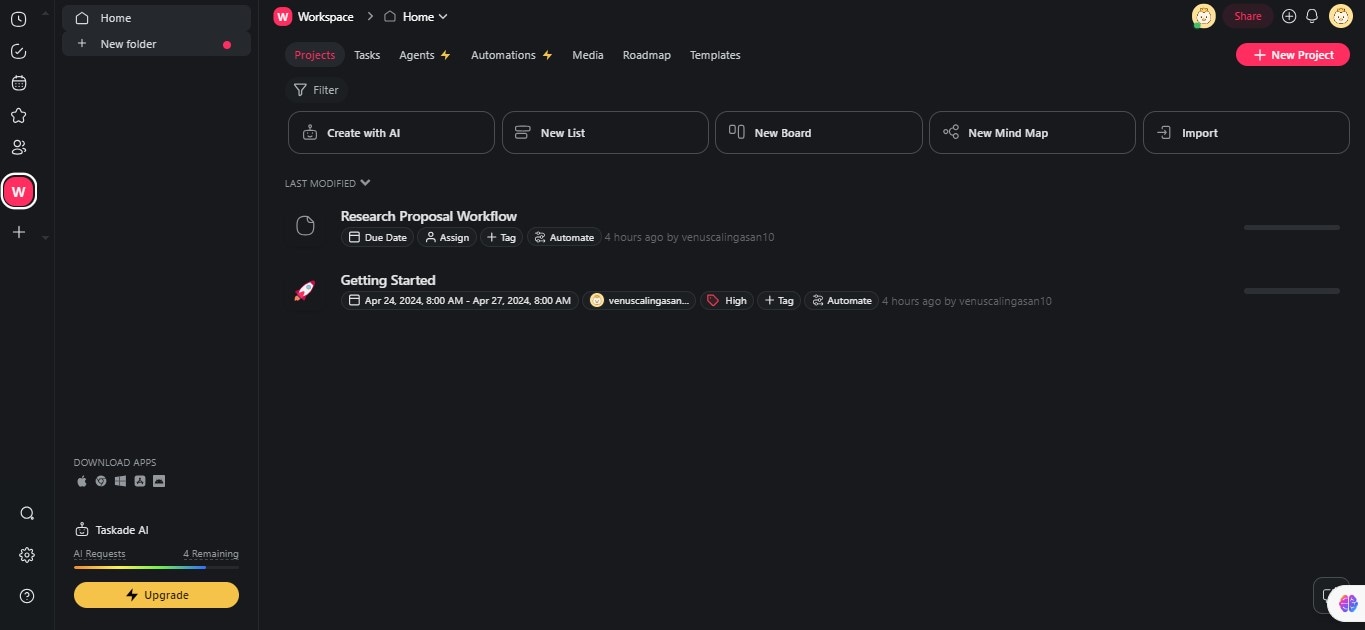
Step5
If you’re working with a team, you can invite others to view or edit the proposal by entering their email addresses.
Step6
Review your proposal, make adjustments, and ensure everything is clear and accurate.
Step7
Once satisfied, save your document. You can also share it directly with your supervisors or colleagues from Taskade.

you can add points about expected challenges and how you plan to address them.
Imagine you’re researching renewable energy solutions. You would open the Taskade research proposal template and start by outlining your main question, like “What are the most cost-effective renewable energy solutions for urban areas?” Next, detail your research methods, potential expert interviews, and timeline for completing each phase. As you fill out the sections,
Using Taskade and other AI research proposal tools can significantly simplify the research process. This allows you to focus more on the quality of your research rather than just the document formatting and basic structure. These tools ensure that your proposal is thorough and presented professionally.
Drawbacks of One-Click AI Research Proposals
One-click AI tools for research proposals can be very handy but have drawbacks. One big issue is that they might not offer enough customization. This means you can't always change the proposal to meet your project's specific needs or match your style. Every research project differs, so a one-size-fits-all approach doesn't work well for everyone.
Another problem is the depth of the content these one-click AI research proposal tools generate. Sometimes, the details in the proposals are too basic and don't cover everything needed for a strong research plan. They might miss key points important for your specific area of study.
Also, academic writing has very specific rules. Each school or journal has its guidelines about how a proposal should be structured and what it should include. One-click research proposal AI writers may not always follow these rules closely, which can be problematic. You might end up with a proposal that looks nice but doesn't fit the academic standards required for your field. Given these drawbacks, it's crucial to explore better options. Next, we will discuss how to use multiple AI tools to draft proposals effectively. This approach will ensure a well-organized and professional academic research proposal.
Part 2. How to Write a Professional Research Proposal with AI
Using AI to write a research proposal can make the process faster and easier. AI helps organize your thoughts and ensures your proposal is clear and well-structured. This approach can greatly improve the quality of your final document.
Step1Generate Ideas Using AI
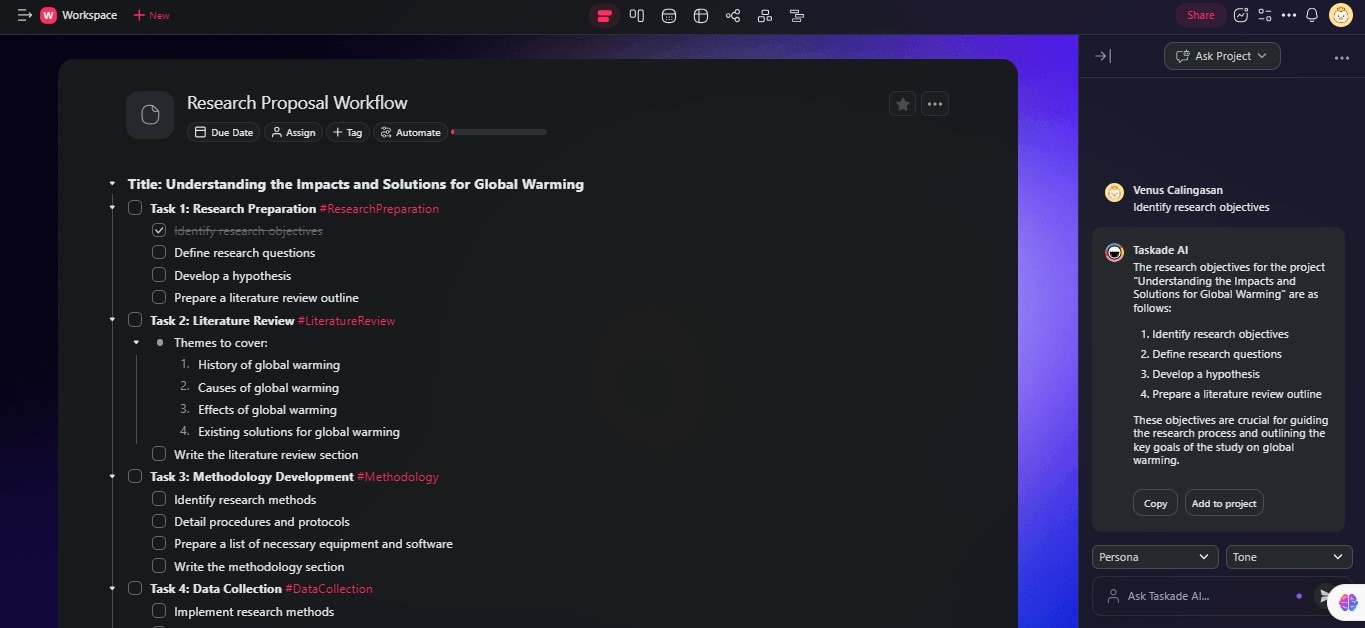
To start your research proposal, use AI to generate ideas. AI tools can help you brainstorm topics and form hypotheses. First, choose an AI brainstorming tool online. Then, enter a general area of interest, like "environmental science" or "healthcare technology." The AI will suggest several specific research topics related to your interest.
Next, pick one of the topics that excite you. You can then use AI to help develop a hypothesis by asking questions about the topic. For example, "What are the key issues in reducing plastic waste?" The AI can offer insights and possible angles for your research, giving you a solid foundation to build upon.
Step2Find and Analyze Literature
Elicit is an AI tool designed to help you find and analyze research papers quickly. It's especially useful when you're starting your literature review. Here's how you can use Elicit to your advantage:
- First, create a free account on Elicit's website.
- Type a clear research question into Elicit. The AI will suggest related questions and find initial articles that could be helpful.
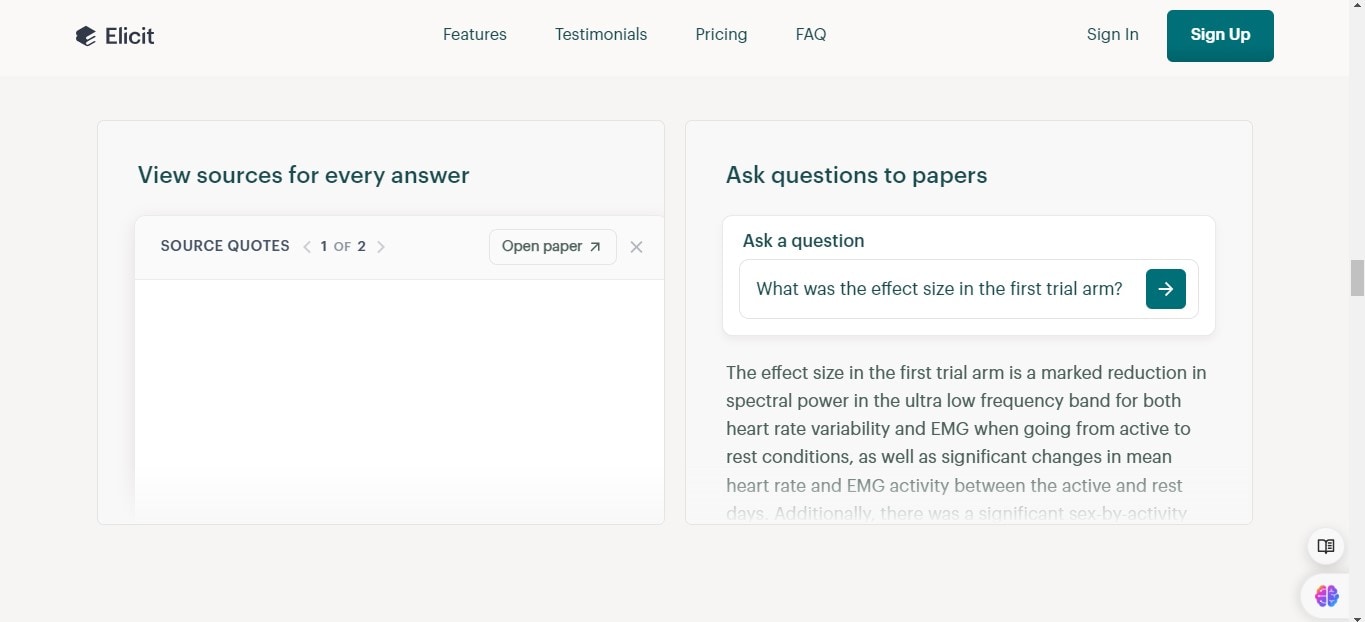
- Elicit shows articles one by one. It finds these articles by keywords and deeply understands your question, even without exact word matches.
- For each suggested article, Elicit summarizes how it relates to your question. It pulls out key information like the study type, number of participants, and main conclusions.
- To organize your references easily, you can start important articles and export them to citation managers like Zotero.
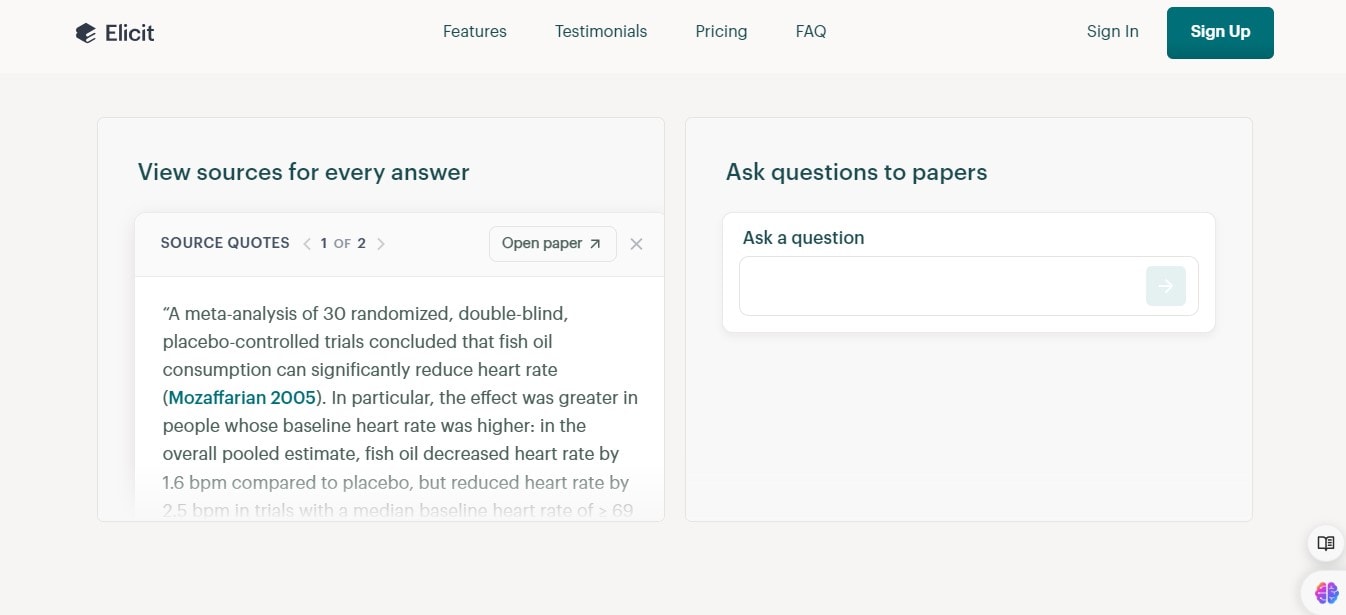
Elicit simplifies the literature review process by automating the search and analysis steps. It saves time and helps you focus on the most relevant research for your proposal.
Step3Read Literature Using AI
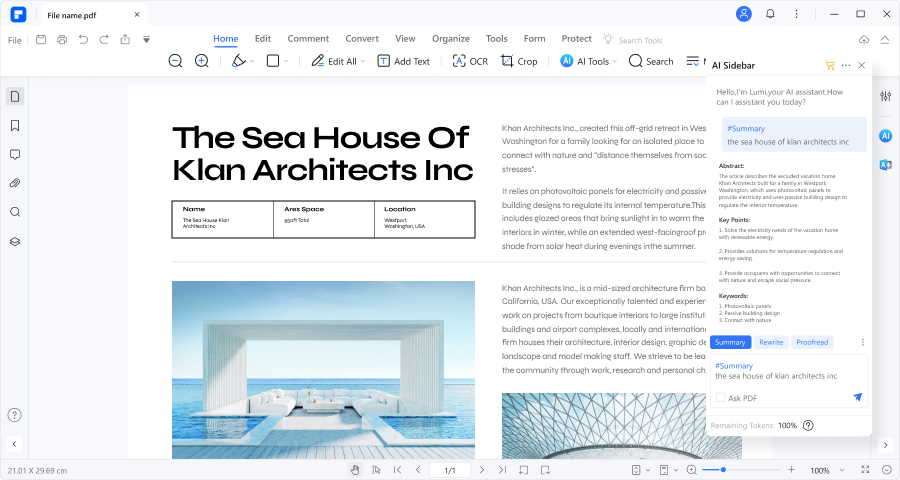
Using Wondershare PDFelement, you can quickly summarize and digest academic papers, making integrating literature insights into your research proposal easier. Here’s how to use PDFelement effectively:
- Launch PDFelement and click the "Open PDF" button. Browse your computer, find the PDF you want to read and open it.

- Click on "AI Tools" in PDFelement. Choose an option from the dropdown menu or use the AI Sidebar. Type in what you want the AI to do with the text (like summarizing the PDF), and then click to start the analysis.

- After Lumi AI processes your document, you’ll see a summary of the extracted information. You can save these insights directly in the app, replacing the original text or as a new document.
Using PDFelement with its Lumi AI feature speeds up how you read and understand research papers. It pulls out key points and important information so you can focus on integrating these insights into your proposal.
Step4Draft Your Research Proposal Outline
FlowGPT can help you create a clear outline for your research proposal with AI. Here’s how to use it effectively:
- Open FlowGPT and start a new document for your research proposal.

- Type in the main points of your research, like your hypothesis, objectives, and methods.
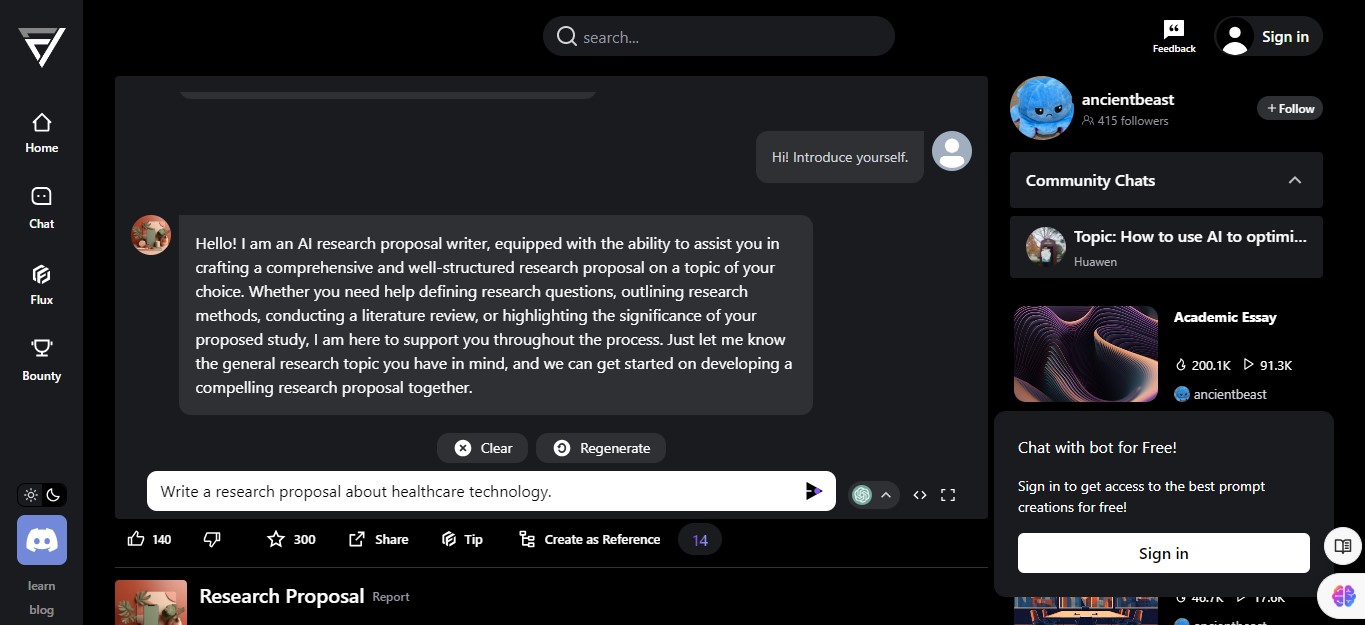
- Ask FlowGPT to create an outline based on your input. It will organize your ideas into a structured format, showing sections for introduction, methodology, expected results, and more.
- Review the suggested outline and adjust it to better match your project’s needs.
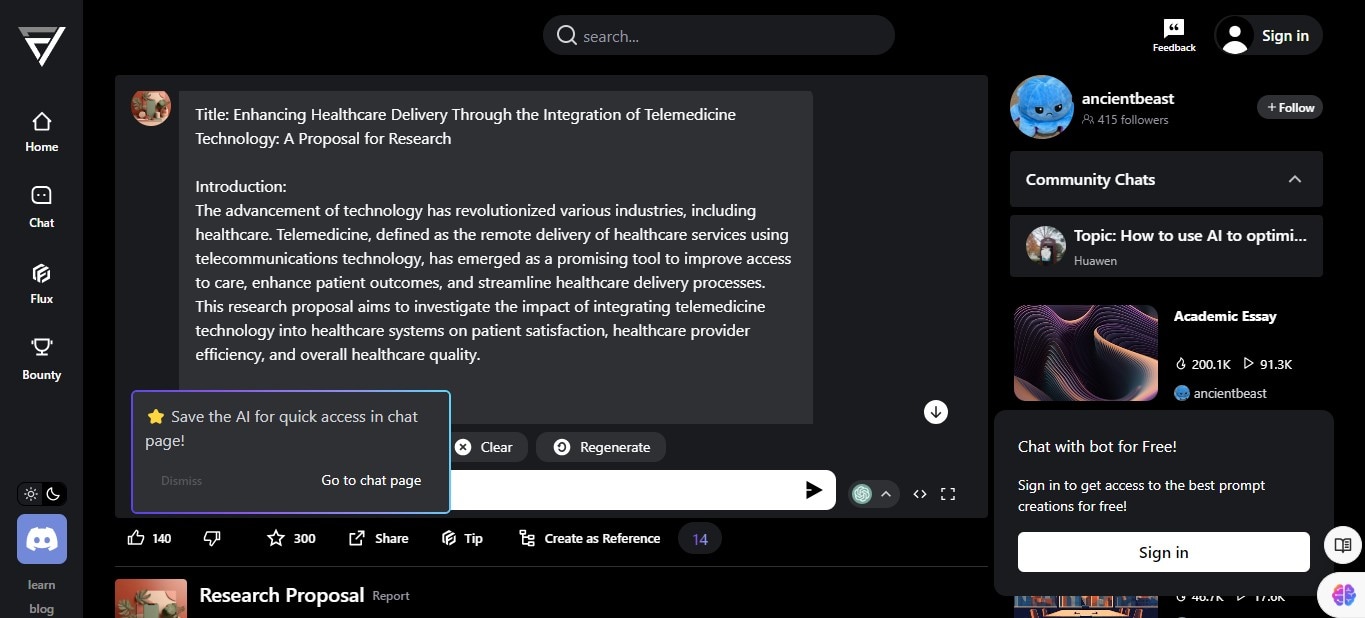
Using AI like FlowGPT makes it easier to structure your research proposal clearly and logically. This helps you ensure that all important parts are included and well-organized.
Step5Expand Sections in the Research Proposal
To fully develop each section of your research proposal, FlowGPT can be a great assistant. Here’s how to enhance the content of your proposal:
- Choose a section from your outline, like the methodology or literature review.
- Provide FlowGPT with more details about what you want to cover in this section. This could include specific methods, theories, or sources you plan to discuss.

- Ask FlowGPT to enhance the section based on your details. It will generate more in-depth content, adding substance to your points.
- Check the AI-generated content. Edit it to ensure it matches your style and meets academic standards.
FlowGPT helps you add substance to each part of your proposal, ensuring your document is thorough and informative. This AI research proposal tool simplifies creating detailed content that supports your research goals.
Step6Review Your Research Proposal Using AI
After writing your AI research proposal, use PDFelement to refine your text for clarity, grammar, and style. Here’s a simple guide on how to do it:
- Launch PDFelement and open the research proposal document you want to review.
- Click on the “AI Tools” button. From the options that appear, select “Proofread PDF.”
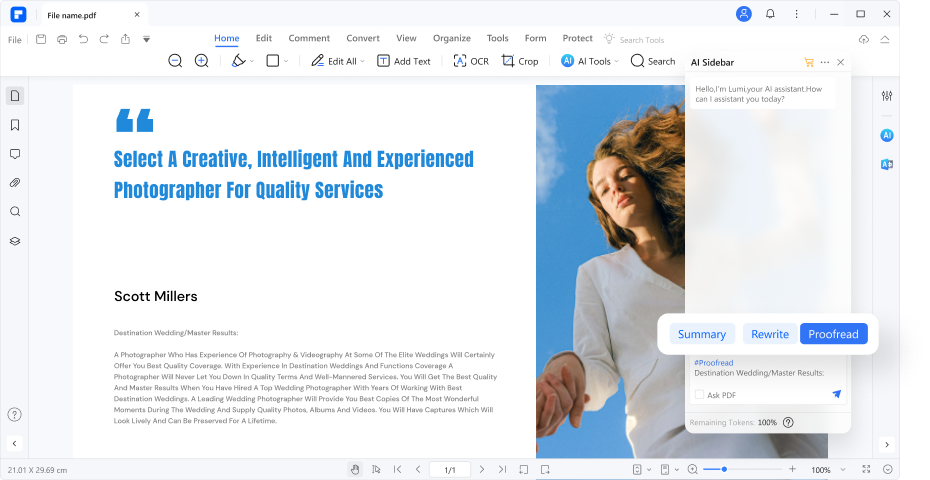
- Enter the sections of your proposal into the tool or upload the entire document. Click “Proofread.” Lumi will analyze your text for grammatical, spelling, or stylistic errors.

- Lumi will display corrections in a response box. Review these suggestions carefully. You can then copy this corrected content into your proposal document or replace the text directly.
- Save the updated document Once all corrections are made and you’re satisfied with the text.
Using PDFelement as a research proposal AI writer ensures your research proposal is error-free and polished in its presentation. This makes it more professional and easier to understand. This step is crucial for making a good impression with your proposal.
Conclusion
Using AI to write a research proposal can make the process easier and more efficient. However, combining AI tools with your insights and checks is important to ensure quality and originality. Doing so can create a well-structured, clear, and impactful research proposal that stands out.

 G2 Rating: 4.5/5 |
G2 Rating: 4.5/5 |  100% Secure
100% Secure



